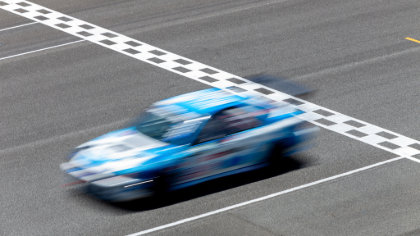INDEPENDENT DEALER
Santa Barbara, CA | (805) 350-2782
OUR BLOG
If you want to get to the finish line first, following pre-race maintenance tips is the cornerstone of a successful and safe racing experience. Learn more through this post by Andys Motor Oils in Santa Barbara, CA.

In the fast-paced world of motorsports, the margin between victory and failure often hinges on meticulous preparation. Pre-race maintenance is essential to ensure your racing car is not only ready for peak performance but also safe and reliable. Here are the essential pre-race maintenance tips to keep your car in top shape.
Call Andys Motor Oils in Santa Barbara, CA, at (805) 350-2782 or visit AMSOIL’s online store to keep your race car fast and safe with the best products for its maintenance.
Pre-Race Maintenance Tips
1. Conduct a Comprehensive Inspection
Before race day, perform a thorough inspection of your vehicle. This step is crucial to identify any potential issues that could affect performance or safety.
- Check for Leaks: Inspect for any fluid leaks, including oil, coolant, brake fluid, and fuel. Even minor leaks can escalate under racing conditions.
- Look for Wear and Tear: Examine belts, hoses, and seals for cracks or fraying. Replace worn components immediately.
- Inspect Fasteners: Ensure all bolts, nuts, and screws are properly torqued, particularly on critical parts like suspension, brakes, and wheels.
2. Optimize the Engine
One of the best pre-race maintenance tips you can follow is to take good care of the engine. Your car’s engine is its heart, and maintaining its health is non-negotiable.
- Change the Oil and Filters: Fresh engine oil reduces friction and ensures smoother operation. Replace oil and air filters to keep contaminants at bay.
- Check Fluids: Verify that all fluids—coolant, transmission, and power steering—are at optimal levels.
- Monitor the Battery: Inspect the battery terminals for corrosion and ensure the charge is sufficient to power your vehicle through the race.
3. Focus on Tires and Wheels
Tires play a critical role in performance, handling, and safety.
- Inspect Tread and Condition: Ensure your tires are in good condition, free from cuts, bulges, or excessive wear.
- Check Tire Pressure: Adjust tire pressure according to track conditions and manufacturer recommendations. Proper pressure ensures optimal grip and handling.
- Align and Balance Wheels: Misaligned or unbalanced wheels can impact steering and cause uneven tire wear, affecting your performance.
4. Fine-Tune the Brakes
In racing, reliable brakes are just as important as speed.
- Inspect Brake Pads and Rotors: Ensure that the brake pads have enough material and that the rotors are free from cracks or excessive wear.
- Check Brake Fluid: Top off or replace brake fluid if necessary. Bleed the brakes to remove air bubbles that can reduce braking efficiency.
- Test Brake Response: Ensure the brake pedal feels firm and responsive. Any sponginess should be addressed immediately.
Make your engine roar with AMSOIL DOMINATOR® 5W-20 100% Synthetic Racing Oil, the best synthetic oil in Santa Barbara, CA.
5. Evaluate the Suspension System
A finely tuned suspension system provides better handling and stability on the track.
- Inspect Shocks and Struts: Look for leaks or damage to your shocks and struts, and replace them if needed.
- Check Bushings and Joints: Worn bushings or loose joints can lead to poor handling. Tighten or replace them as required.
- Adjust Settings: Fine-tune suspension settings for the track conditions to optimize performance.
6. Test the Electronics
Modern racing cars rely heavily on electronics, making this an important area to inspect.
- Verify Sensors and Gauges: Ensure all sensors, gauges, and indicators are functioning correctly to provide accurate data during the race.
- Inspect the Wiring Harness: Check for frayed or loose wires that could cause electrical failures.
- Test Communication Systems: If your race includes in-car communication, ensure your radios and headsets are operational.
7. Prepare Safety Equipment
Safety is paramount, and your gear and equipment must be race-ready.
- Inspect the Roll Cage and Harness: Ensure your roll cage is secure and your harness is free from wear or damage.
- Check the Fire Suppression System: Verify that your fire suppression system is fully charged and operational.
- Inspect the Helmet and Suit: Ensure your helmet, racing suit, gloves, and shoes meet safety standards and are in good condition.
8. Perform a Test Run
Once your maintenance checklist is complete, take your car for a test run under race-like conditions. This helps you:
- Identify any last-minute issues.
- Fine-tune performance settings.
- Gain confidence in your car’s readiness.